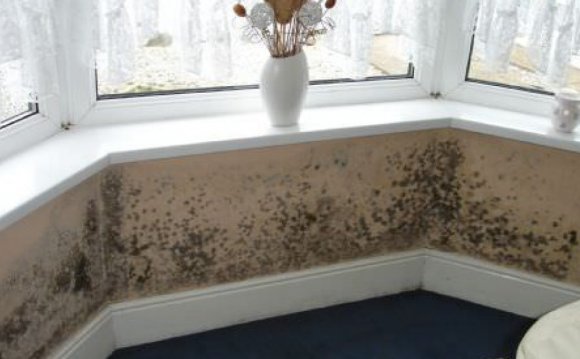
Everyday things like cooking, washing, bathing and even breathing cause moisture, which is released into the air. The air can only hold a certain amount of water vapour - the warmer it is, the more it can hold. If this is cooled by contact with a cold surface such as mirror, a window or even a wall, the water vapour will turn into droplets of water - condensation. This is what happens when the mirrors mists up in the bathroom.
What does condensation look like?
Every home gets condensation at some time - usually when lots of moisture and steam are being produced such as bath times, when cooking meals or washing clothes.
Fish tanks and indoor plants can also give rise to large quantities of moisture in the air.
It is quite normal to find your bedroom windows misted up in the morning after a cold night, which is to be expected and is not indicative of a serious condensation problem.
If your home never seems to be free from condensation, or you have mould growth as well, read on.
There are three key things you can do to reduce it
1. Produce less moisture
- Dry your washing outside the property whenever you can. You can also hang it in the bathroom, keeping the door closed and the window wide open.
- Never use portable gas bottles or paraffin (flueless) heaters.
- Permanently vent your tumble drier to the outside of your home, using a suitable kit recommended by the manufacturer of the appliance.
- While cooking, always cover pans and don't leave kettles boiling.
2. Ventilate well to remove moisture
- When a room is in use, keep a small window and/or a trickle vent open.
- Ventilate bathrooms and kitchens.
- Keep bathroom and kitchen doors closed even if they have extractor fans.
- Ventilate cupboards and wardrobes - do not overfill wardrobes - let the air circulate freely inside. For the same reason, cut holes in the back panel of the wardrobe and move it 50mm away from the surrounding wall. If possible, locate wardrobes against internal walls.
3. Insulate and heat your home
- Keep your home warm with insulation, draughtproofing and heating: this reduces the risk of condensation.
- A constant, low-level form of heating provides the most economical form of heat and reduces the likelihood of condensation.
How to help yourself
- Treat and remove the mould - there are various products on the market that will help such as fungicidal products available in DIY stores.
- Wipe down windows, frames and other affected areas with a fungicidal wash (or a bleach solution). Make sure you follow the manufacturer's instructions precisely.
- Dry-clean mildewed clothes and shampoo mouldy carpets.
- After treating mould-affected areas, redecorate using a good-quality fungicidal paint. Where possible remove lining paper and wallpaper, treat the plaster and then paint or paper the area again.









